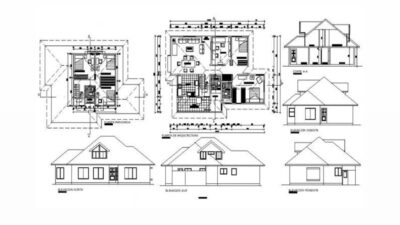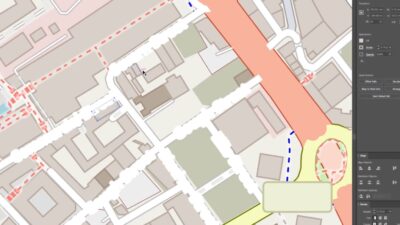If the allure of vibrant, sun-drenched landscapes, coupled with a rich architectural history stirs your passion for architecture, California may be your destination. This state is a melting pot of architectural styles, encapsulating the influence of luminaries like Irving Gill, who forever imprinted the state’s architectural narrative. This comprehensive article serves as a stepping stone for all those who aspire to contribute their artistry to the Golden State’s tapestry of structures.
California is renowned for its rigorous architecture licensure process – a reputation that’s built on the state’s dedication to maintain high standards within the profession. The journey to licensure in California poses unique challenges, stemming from its complex regulations, and uniquely, requires prospective architects to clear an additional exam beyond the National Council of Architectural Registration Boards (NCARB)’s Architect Registration Examination (ARE).
Let’s delve deeper into the ins and outs of the California architectural licensure process, familiarize ourselves with the governing bodies and regulations, and demystify what it takes to earn the coveted license.
Understanding the Governing Bodies and their Roles
Before we embark on understanding the procedure of acquiring an architecture license in California, it’s essential to understand the authorities that administer this process. The California Architect’s Board (CAB) is the primary body that governs the licensure of architects in the state. They work in collaboration with the NCARB, a prominent nationwide organization responsible for regulating the architecture profession across the U.S.
The NCARB administers the ARE, a standard exam taken by candidates before receiving licensure in most states. However, the architectural licensure in California is unique as it requires an additional, state-specific examination, the California Supplemental Examination (CSE).
Decoding the California Architecture Licensure Process
Getting an architecture license in California is an intricate process, which involves satisfying educational requirements, accumulating requisite experience, and passing a series of examinations. Each of these aspects is instated to ensure that candidates acquire the necessary knowledge, skills, and competencies before they start practicing in the state.
Here’s a detailed step-by-step guide to becoming a licensed architect in California:
- Educational Requirements: California requires candidates to have a professional degree in architecture from a program accredited by the National Architectural Accrediting Board (NAAB). However, they do accommodate individuals with non-accredited degrees or educational credentials from foreign institutions, provided they meet specific criteria;
- Experience Requirements: Candidates must accumulate a certain number of hours of architectural practice under the supervision of a licensed architect. This is done through the Architectural Experience Program (AXP), which ensures that aspiring architects can acquire comprehensive and balanced experience in important aspects of the practice;
- Examination Requirements: Aspiring architects in California must pass both the NCARB’s ARE and the state-specific CSE. The ARE tests a candidate’s knowledge in different areas of architectural practice, while the CSE focuses on testing the knowledge and skills required for practicing architecture in California’s unique context.
Governing Bodies for Architectural Licensure in California
The cornerstone of the architectural licensure process in California is the California Architects Board (CAB) which painstakingly manages and supervises the entire licensure process. A treasure trove of invaluable information, CAB’s website delivers a comprehensive view of the process for aspiring architects via its ‘Candidates’ section.
Embedded within this section is the pivotal ‘Architects Practice Act.’ This crucial document is a compilation of all relevant laws pertaining to architectural licensure from the California’s Business and Professions Code and the California Code of Regulations. Together, they form the bedrock of the legal framework encompassing California’s architectural licensure.
As an aspiring architect seeking licensure in California, it’s of paramount importance to familiarize oneself with the legalities that govern the process. However, the intricate details of California’s codified regulations might appear daunting at first glance. Fear not – as this article is designed to dissect and present the requirements in an easy-to-understand manner, providing an insight into the application and practicality of these statutes.
In-depth Overview of California’s Architectural Licensing Process
The journey toward earning an architecture license in California exists within a framework of education, experience, and examination. Each facet is set up to ensure that candidates possess adequate knowledge and skills to uphold the state’s stringent standards for architectural practice. The following elucidates this step-by-step process:
- Educational Requirements: To meet the educational prerequisite, candidates need to earn a professional degree in architecture. This degree should be from a program endorsed by the National Architectural Accrediting Board (NAAB). However, exceptions exist for those with non-accredited degrees or educational qualifications obtained outside the U.S., with certain criteria to be fulfilled;
- Experience Requirements: Candidates are required to garner a set number of practice hours under the supervision of a licensed architect. The Architectural Experience Program (AXP) facilitates this requirement and enables prospective architects to gain comprehensive exposure to important areas of architectural practice;
- Examination Requirements: The licensing process mandates that candidates pass two examinations – the Architect Registration Examination (ARE) administered by NCARB, and the state-specific California Supplemental Examination (CSE). While the ARE gauges a candidate’s knowledge across different areas of architectural practice, the CSE evaluates their aptitude specifically within California’s unique architectural landscape.
Laying the Foundation: Understanding Requirements for Becoming a California Architect
Obtaining architectural licensure in California is not a straightforward journey; the state has worked diligently to strike a balance between flexibility, accessibility, and maintaining the high standard of proficiency that the National Council of Architectural Registration Boards (NCARB) stands by. The state’s unique approach to licensure is reflected in its nuanced requirements that offer alternatives to traditional pathways.
Contrary to most states’ stipulations, California does not necessarily insist on formalized education as a prerequisite for architectural licensure. Instead, the state puts significant emphasis on practical experience and the successful completion of mandatory examinations. In essence, the cornerstone of California’s architectural licensure process can be broken down into three principal steps:
- Accumulate an equivalent of eight years’ worth of relevant experience;
- Successfully clear the Architect Registration Examination (ARE);
- Pass the state-specific California Supplemental Examination (CSE).

A Detailed Look at the California Architectural Licensing Process
The journey to becoming a licensed architect in California comprises multiple dimensions, encompassing experience, education, and examinations. Each facet plays a crucial role in preparing the aspirant for the complexities and responsibilities of professional practice.
1. Accumulating Experience
The California licensing process places immense importance on practical experience. It mandates aspiring architects to garner ‘eight credit years’ of relevant experience. The term ‘credit years’ is significant, moving away from the concept of calendar years to a more comprehensive measurement of experience, considering the quality, relevance, and diversity of the acquired knowledge.
The state acknowledges various forms of experience that can contribute towards the requirements, inclusive of both educational and professional exposures.
To clarify, here are a few examples to illustrate how different educational and professional experiences translate into ‘credit years’:
- A professional degree in architecture from a NAAB-accredited program, typically a five-year program, equates to five credit years of experience;
- A post-professional degree from a NAAB-accredited program combined with a Bachelor’s degree from a NAAB-accredited program equates to six credit years of experience;
- A Bachelor’s degree in a field related to architecture amounts to two credit years;
- Experience working under a U.S.-licensed architect is worth one credit year per year.
Each of these examples carries a different weight, based on the nature and relevance of the experience. For a precise understanding of your specific experiences and their value, the California Architect Board’s ‘Requirements for Eligibility Page’ provides a comprehensive resource.
2. Passing the Architect Registration Examination (ARE)
Five credit years of experience is the threshold for eligibility to take the ARE in California. The ARE is designed by NCARB and is a comprehensive tool that assesses the aspirant’s knowledge across various aspects of architectural practice.
3. Clearing the California Supplemental Examination (CSE)
The final stepping stone to licensure in California is the California Supplemental Examination (CSE). This is a state-specific test designed to evaluate a candidate’s readiness for professional practice, considering the unique environmental, legal, and societal contexts in California.
This exam covers a range of topics, including contract development, project planning, schematic design, discretionary approvals, design development, construction documents, permit provisioning, project bidding, and construction.
Expanding Horizons: From California to Florida Architecture Licensure
If the allure of vibrant landscapes and architectural wonders has you considering California as your starting point, why not think about continuing your journey in the Sunshine State, Florida? Florida boasts its own distinctive architectural scene and licensure process.
Florida Architecture License
To practice architecture in Florida, you’ll need to navigate the licensure process overseen by the Florida Board of Architecture and Interior Design (BOAID). This involves completing an accredited architecture degree, gaining relevant work experience, and passing the Florida Architecture Registration Examination (ARE).
Both California and Florida offer unique opportunities for architects to contribute to their architectural landscapes, making it worthwhile to explore the requirements of both states and decide which path aligns best with your career aspirations.
Conclusion
Obtaining an architecture license in California is a complex process requiring a keen sense of planning and a solid commitment. However, the state provides several pathways to fulfill these requirements, embracing diversity in education and work experiences.
With these insights into California’s architectural licensing requirements and process, aspirants can embark on their journey with a clear roadmap. The reward at the end of this journey? The privilege to contribute to California’s architectural landscape, shaping the Golden State with your unique design language.











